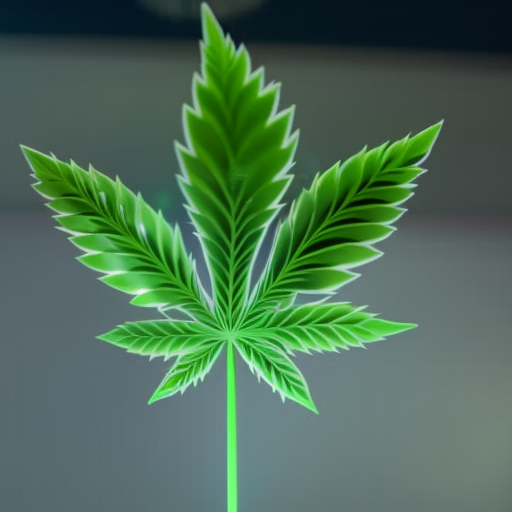
While humans battle COVID, cannabis plants are facing their own devastating threat: Hop latent viroid (HLVd). HLVd is a viroid that typically occurs in hops but has recently made the jump to cannabis plants, resulting in the destruction of THC yields in infected plants.
According to a report by SFGate, scientists from Medicinal Genomics, based in Massachusetts, have observed a cannabis variety called Jamaican Lion that appears to be partially resistant to HLVd. Interestingly, as the plant fights the viroid, it turns purple.
Chief Science Officer for Medicinal Genomics, Kevin McKernan, presented “Hop Latent Viroid Shares a 19 Nucleotide Sequence with Cannabis sativa COG7” at CannMed23. This event was attended by leading figures in cannabis science such as Raphael Mechoulam, Ethan Russo, MD, Bonnie Goldstein, MD, and Debra Kimless.
The Jamaican Lion strain showed resistance to HLVd and continued to turn purple as it fought off the viroid. Jamaican Lion is an award-winning strain known for its high CBD content.
Viroids can be spread through biological means or by growers through touch or contaminated tools. To reduce infection, sterilizing with a 10% bleach solution is recommended. Scientists conducted experiments by directly rubbing the viroid onto cut leaves of the plant to infect them and then injecting the plant with the viroid. After repeating this test 57 times over six weeks, the Jamaican Lion variety remained uninfected. Although HLVd was detected in the plant’s roots, the leaf and flower tissue tested negative until harvest time.
The reason why this particular plant is resistant to the viroid is still unknown. McKernan suggests that the increased production of anthocyanin, a chemical responsible for turning plants purple, may be playing a role in its resistance. The team believes that further investigation should be done to determine if there are more purple plants that are resistant to HLVd, as anthocyanin production has been linked to fighting viroids in other plant species.
This resistance could potentially save cannabis farms from the devastating effects of HLVd. Anthocyanin production has been associated with an immune response in plants, which may explain why the Jamaican Lion strain is able to fight off the viroid.
McKernan turned to cannabis as a means to help combat his father’s stage-4 prostate cancer. With guidance from experts like Mechoulam, Goldstein, Kimless, and others, he sought to maximize the health benefits of cannabinoids.
Zamir K. Punja, who spoke at the conference, considers HLVd a “major threat” to cannabis farms and refers to it as the “COVID of the cannabis world.” Studies have shown that THC yields from infected plants can drop by up to 40%, which is detrimental for cannabis farmers.
Medicinal Genomics’ long-term solution in combating HLVd is to assist breeders in developing resistant cultivars, potentially including purple varieties, that do not experience a loss in yield or potency.
In conclusion, the discovery of a viroid-resistant purple cannabis strain provides hope for cannabis farmers facing the devastating impact of HLVd. Further research is needed to understand the mechanisms behind this resistance and potentially develop more resistant cultivars.

